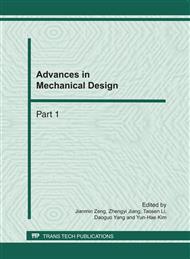p.1906
p.1912
p.1916
p.1920
p.1924
p.1928
p.1932
p.1936
p.1940
Cold Extrusion Process Analysis of "Seven-Speed Sleeve" and Forming Parameter Optimization
Abstract:
The scheme for cold extrusion process of Seven-speed sleeve is determined according to the experiences and analysis by DEFORM-3D software, the extrusion procedure has been numerical simulation analyzed; The part technology and parameters of die structure has been optimized by orthogonal test. The optimized process parameters are as following: friction factor is 0.10, blank height is 31.4mm, extrusion speed is 200mm/s; The optimized parameters of die structure are as following: 1st step convex fillet is 1.5mm, 1st step concave rounded is 2.0mm, 2nd step convex fillet is 2.0mm, 2nd step concave rounded is 1.0mm, 1st step die-entrance angle is 35°, 2nd step die-entrance angle is 60°.The qualified products are obtained using the optimized process parameters in the production practice.
Info:
Periodical:
Pages:
1924-1927
Citation:
Online since:
February 2011
Authors:
Keywords:
Price:
Сopyright:
© 2011 Trans Tech Publications Ltd. All Rights Reserved
Share:
Citation:


